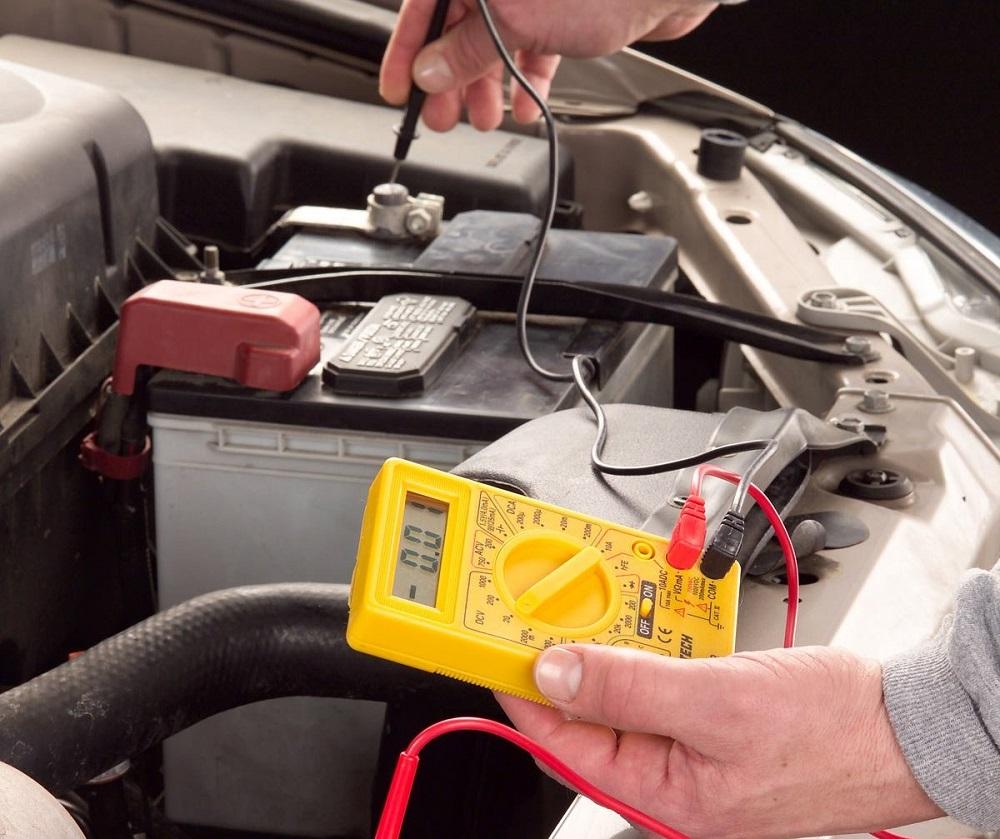How to Test Radiator Fan with Multimeter
The main function of a radiator fan is to prevent the engine from overheating. It distributes cooler air through the radiator and exchanges the engine heat. Having four to eight blades, this fan rotates quickly to send cooler air to the engine. It works as a part of the overall cooling system. If the fan shows any problem or stops working, you can use a multimeter to check if it has the correct voltage and its motors are working. Do you know how to test radiator fan with multimeter?
There is a sensor on the bottom passenger side of the radiator. It does the job of taking notes of coolant temperature. It sends signals to the radiator fan to turn on when the temperature crosses 172°F. The fan should also turn on after switching on the air conditioner. There must be a problem with the fan if it does not spin when it should and spins when it should not. In either case, you can detect the issues by using a multimeter.

How to Test Radiator Fan with Multimeter
If the radiator fan is not running, you have to check its fuses to find out if the problem is with the fan itself or other components in the system. So how to check radiator fan?
Here’s how to test radiator fan with multimeter by checking the fuses.
See more:
Examining the Fuses with a Multimeter
So in order to how to check if radiator fan is working, you have to check the voltage of a few fuses in the under-dash fuse box (number 3, 15, and 20) and under-hood fuse box (number 47 and 50). Kick off the engine or switch the ignition key off to IG2. Set the multimeter’s meter to ‘20’ in the DCV section as you will be testing 12V circuits.
The black multimeter probe will go to the negative battery terminal (for under-hood fuses) or a metal ground point on the car (for under-dash fuses). Each fuse has two contacts where you have to touch the multimeter’s test probes to get the readings.

Touch the red probe to any of the two contacts and take the reading. The value should be around 12 volts. No need to worry about recording the precise voltage reading because it varies due to several factors including the alternator output and the charge in the battery. Touch the robe to another contact and take the reading.
Now, what do the readings mean? How to test cooling fan with this tool?
12V on both contacts. It means the fuse is working fine and you can just move on to check the next one.
12V one contact and 0V on the other. This is the sign of a blown fuse. You need to replace it.
0V on both contacts. It means the fuse does not have any power, which is only possible if the black probe is not properly connected to the negative terminal of the battery or grounded to a metal part. Detach the probe and then reconnect again to take readings.
Watch more how to test a radiator fan for any cars:
Frequently Asked Question
Since the radiator fan is an essential part of an automobile, our car experts have answered all the questions around this subject:
1. How do I know if the radiator fan is bad?
Usually, a poor-performance cooling fan is very easy to spot. These are 3 most common symptoms:
Blown fuse
First of all, a blown radiator fan fuse is the most well-known symptom. Car owners understand the importance of cooling fan motors since they keep the automobile at the right temperature, especially when idling and at low speeds. So if this component surges, the fuse will be blown for the sake of the engine: Electrical surges will damage the whole system if the fuse transfers them completely to the system.
The simple method to fix this problem is to replace the fuse in order to restore the functionality of the fans.
Car Overheating
Second of all, automobile overheating is another sign of the radiator fan’s problem. A radiator fan is created in order of cooling and air conditioning once a certain temperature is reached. However, when there is a failure in cooling fan motors, the temperature will continue to rise, leading to engine overheating. On the other hand, vehicle overheating can be caused by various factors, so it is recommended to have your vehicle carefully diagnosed.
Cooling Fans Stop Working
Last but not least, a bad radiator fan is a stop-working cooling fan. This might be due to the motors’ fault which disables the cooling fans, therefore cannot release air.
2. Should the radiator fan come on when the car starts?
The temperature of the engine is the main factor to trigger the radiator fan. Below 200 degrees, the fan turns off, above it, the fan turns on.
3. What causes the radiator fan to come on?
Many elements could trigger the fan: The coolant temperature sensor, temperature switch,…
4. Does the radiator fan come on with AC?
Two common factors open the radiator fans: When the AC compressor is engaged, and when the coolant sensor reaches the right temperature.
5. What controls the radiator fan?
The thermal fan clutch is the part that controls the radiator fan. This part can sense radiator heat in order to trigger or turn off the cooling fan. For that reason, when the engine reaches higher temperature than the standard level, the radiator fan will be switched on.
6. How much does it cost to fix the radiator fan?
The cost of a radiator fan is not as expensive as many drivers think: Around $300 to $450 is the price that most automobile manufacturers and car stores have. Along with that, car owners might need to pay 200$ for the labor involved.














